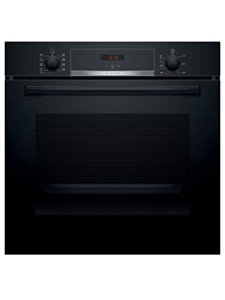Are You Responsible For The Built In Electric Oven Budget? 10 Amazing Ways To Spend Your Money
The Comprehensive Guide to Built-In Electric Ovens
Intro
Built-in electric ovens have actually become a staple in modern-day cooking areas, merging convenience with efficiency while enhancing the total visual of cooking areas. Unlike conventional freestanding models, built-in ovens are integrated into kitchen cabinetry, providing a smooth and smooth appearance. In this article, we will explore the different elements of built-in electric ovens, including their benefits, functions, setup considerations, and upkeep ideas. In addition, some regularly asked questions will be addressed to offer an extensive understanding of this kitchen home appliance.
- * *
Table of Contents
- What is a Built-In Electric Oven?
- Advantages of Built-In Electric Ovens
- Key Features to Consider
- Setup Guidelines
- Maintenance and Care
- Often Asked Questions (FAQs)
- Conclusion
- * *
1. What is a Built-In Electric Oven?
A built-in electric oven is a kind of cooking appliance that is created to be installed directly into kitchen cabinets. built-in / integrated hobs oven runs using electrical power and can be integrated into wall units or beneath the counter top. This kind of oven provides versatility in style and can be coupled with other appliances to develop a cohesive kitchen design.
2. Advantages of Built-In Electric Ovens
Built-in electric ovens featured several advantages that make them a popular choice among house owners and chefs alike. Here are some key advantages:
- Space-saving Design: Built-in ovens maximize countertop space, producing a less cluttered kitchen environment.
- Visual Appeal: They provide a more sleek appearance, permitting for personalization with kitchen cabinetry, which can elevate the general design of the kitchen.
- Enhanced Accessibility: These ovens are frequently set up at eye level, making it much easier to examine food without bending down and reducing the danger of spills.
- Versatile Cooking Options: Many built-in electric ovens featured numerous cooking functions such as baking, broiling, and convection settings for versatility.
- Energy Efficiency: Electric ovens tend to be more energy-efficient than gas models, making them an eco-friendly option for the home.
3. Secret Features to Consider
When selecting a built-in electric oven, it is important to evaluate various functions to guarantee it satisfies cooking requirements. Here are some functions to search for:
- Capacity: Choose an oven size that fits your household's cooking requirements; capabilities normally range from 24 to 30 inches.
- Convection Settings: Convection ovens use a fan to distribute hot air, promoting even cooking and browning.
- Self-Cleaning Options: Many contemporary ovens featured self-cleaning capabilities, saving time and effort.
- Smart Technology: Some built-in electric ovens boast wise performances, permitting users to manage settings through smartphone apps.
- Several Racks: Check if the oven has adjustable racks to accommodate various sizes of cookware.
Function
Description
Size
Ranges from 24 to 30 inches
Self-Cleaning Option
Yes/No
Convection Feature
Yes/No
Smart Technology
Yes/No
Variety of Racks
Adjustable racks for diverse cooking requires
4. Installation Guidelines
Setting up a built-in electric oven needs cautious factor to consider and planning. Here are some steps to follow during the setup process:
- Measure the Space: Ensure that the oven will suit the designated cabinet requirements, thinking about any extra clearance needed for ventilation.
- Electrical Outlet: Verify that an ideal electrical outlet is readily available near the installation site, as most built-in electric ovens need a dedicated 240-volt circuit.
- Level the Oven: A level setup is critical to ensure even cooking. Usage adjustable legs or spacers to assist in leveling the oven.
- Secure the Oven: Once placed in the cabinet, protect the oven according to the producer's guidelines to prevent motion during usage.
- Test Functionality: Before settling the setup, test the oven to ensure it operates smoothly and safely.
5. Upkeep and Care
Correct maintenance is vital for making sure the longevity and effectiveness of a built-in electric oven. Here are some maintenance suggestions:
- Regular Cleaning: Wipe down the exterior and interior of the oven after each use; for self-cleaning models, follow the manufacturer's standards.
- Check Seals and Gaskets: Inspect oven door seals for wear and tear, as effective seals prevent heat loss and energy waste.
- Adjust the Oven: If food is regularly overcooking or undercooking, think about recalibrating the oven temperature according to the user manual.
- Set up Servicing: It is advisable to have actually the oven serviced by a professional technician each year to guarantee it stays in good working condition.
6. Frequently Asked Questions (FAQs)
Q1: Do built-in electric ovens require special installation?
- Yes, built-in electric ovens require professional setup to guarantee they are safely integrated into cabinets and connected to the electrical system.
Q2: Can built-in electric ovens be utilized for several cooking techniques?
- Yes, lots of modern built-in electric ovens provide different cooking techniques, consisting of baking, roasting, broiling, and convection cooking.
Q3: Are built-in electric ovens more energy-efficient than traditional models?
- Generally, electric ovens can be more energy-efficient than gas varieties, especially with features like self-cleaning and convection cooking.
Q4: How typically should I clean my built-in electric oven?
- It is recommended to clean the oven frequently and to utilize the self-cleaning feature (if available) at least every couple of months based on use.
7. Conclusion
Built-in electric ovens are an advanced addition to any kitchen, combining functionality with design. With their numerous functions, energy efficiency, and sleek design, they can substantially boost both the cooking experience and the overall kitchen aesthetics. By comprehending their benefits, installation requirements, and maintenance needs, homeowners can make informed decisions when buying this essential kitchen device.
- * *
Incorporating a built-in electric oven into your kitchen can be a transformative option – one that raises both the cooking experience and the beauty of the kitchen area.
